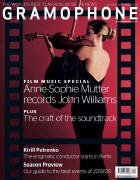Texte paru dans: / Appeared in: |
|
 |
Outil de traduction (Très approximatif) |
|
Reviewer:
Charlotte Gardner This is so delicious that it’s tempting simply to suggest that you to go and buy it. But of course I’ll elaborate. BaroccoTout comprise traverso flautist Carlota Garcia, violinist Izana Soria, cellist Edouard Catalan and harpsichordist Ganael Schneider. This, their debut disc, was part of their prize for winning the 2017 York Early Music Young Artists Competition. As for their composer of choice, Antwerp-born Henri-Jacques de Croes (1705-86) is a shadowy figure. Historically speaking, we know a certain amount: he was a talented violinist whose career was mostly played out as leader of the court orchestra in Brussels, with composing duties part of the package, and his music was expected to align with the reigning Charles of Lorraine’s taste for an unstuffy Italianate rococo galant style in keeping with that of Louis XIV’s court in Paris. In terms of his musical legacy, however, there’s very little left. In fact this Op 5 set of six trio sonatas was until recently considered lost; and indeed, while in practice it’s only No 6 that was previously thought to be genuinely lost (since half the sonatas are copies of pieces already published in Op 1), it might as well have been the lot of them, so little attention have they received. Back to these four young players, and while normally I’d dismiss as meaningless marketing twaddle the mission statement on their website declaring ‘BarrocoTout plays early music with contemporary passion’, I’d say that in this case it’s actually hitting on something very real about this group, even bearing in mind that that’s what you want of any musician playing any non-contemporary music. Perhaps it’s in the sheer freshness and fire behind their sound from the outset of No 1’s opening Allegro. Or perhaps it’s the almost indecent playful sensuousness heard after a further minute, via the fluttering trills from the flute and violin joined smartly together in minor sixths; I’m talking both texture and inflection here, with the whole still feeling thoroughly courtly and dignified. Think naughty tickles in Versailles corridors, clothes still on. What else? Well, there’s the lyricism and grace of the duetting in No 2’s central Adagio at 0'41", when the violin first enters to bring its own spin on the flute’s ornately but delicately embellished opening melody. Or the nimble, unforced drama Catalan brings to the busy bass line of No 5’s opening Allegro. Also the beautiful interplay between all four in No 6’s central Grave, and here I must also comment that Schneider’s harpsichord playing throughout is a joy. Can this really be a young ensemble recording their first disc? Or, indeed, could only a young ensemble have produced this? Either way, I love it. |
|




